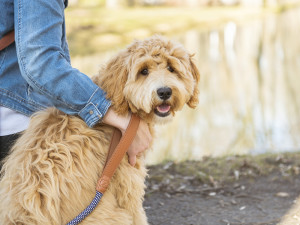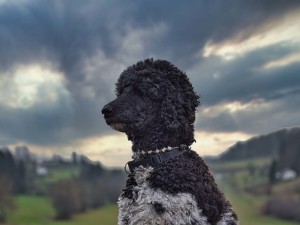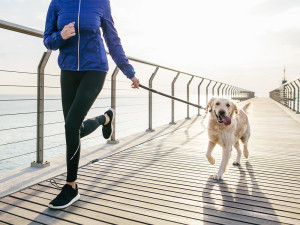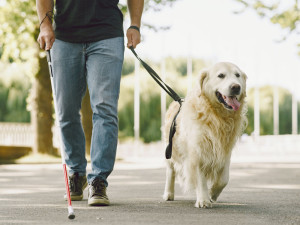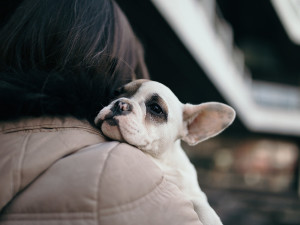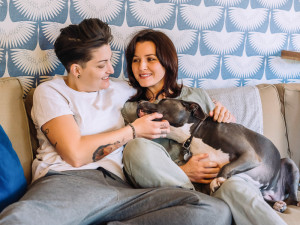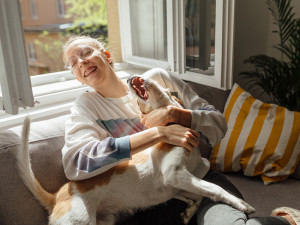The Real Reason Dachshunds Look Like Hot Dogs
Turns out, it’s not just for the cute factor.
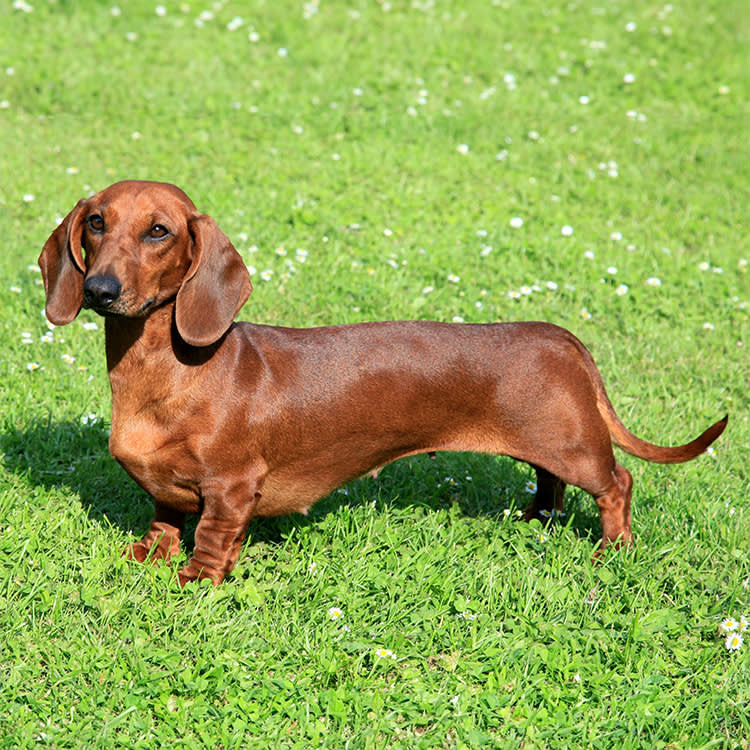
Share Article
Ironically, “Dachshund” is no Dachshund lover’s favorite word (and not just because it’s nearly impossible to spell). No, Dachshunds are meant to be called exactly what they are: Hotdogs. Wiener dogs. Sausage dogs. The list goes on.
The long, squat creatures are iconic for their unique shape. But why do Dachshunds look like that? As it turns out, there’s a legit reason Dachshunds were bred to be short and long — and it’s not to look super cute in a bun costumeopens in a new tab on Halloween.

Get (totally free) deals for food, treats, accessories, tech, and way more pet parenting must-haves.
opens in a new tabWhy do Dachshunds look like, um, that?
As it turns out, most of a Dachshunds’ physical features were deliberately bredopens in a new tab for one purpose: badger hunting. The word “Dachshund” literally means “badger dog” in German. By the 18th century, Germans began to breed the dogs specifically for the job of burrowing into badger dens.
To get into these dens, the dogs had to be narrow, with curved legs and compact feet. Their feet were bred to be paddle-shaped and long for digging. Dachshunds have larger chests and breastbones to allow their arms to have an impressive range of motion — another necessity for digging quickly and navigating through tight dens. The long ribcage gives them room for a large heart and lungs — two necessities for long hours of underground exploration.
Their short legs were bred for two purposes: one was to keep them small for burrowing in tight spaces, and another was to keep them low to the ground for scent tracking.
As for which breeds are the Dachshund’s original ancestors: Call Maury, ‘cause no one knows for sure. The original breeding history wasn’t recorded, but experts have some guesses. Various Pointers, Terriers, Bloodhounds, and Bassets have been suggested — including German Pinschers, Hanover Hounds, and German Shorthaired Pointers.
There are actually varieties of Dachshunds.
Today’s Dachshunds can be standard (usually around 15 to 35 pounds) or miniature size (up to 11 pounds). The standard size is the original; these pups were used to hunt badgers. Fun fact: large Dachshunds have also been used to huntopens in a new tab deer, boar, fox, and other animals.
Then, in the 1800s, Germany had a problem with their rabbit population. Their solution? A smaller version of the Dachshund that could slink into rabbit holes. A modern day Dachshund who’s not quite a Miniature or Standard is called a “tweenie.”
Dachshunds can also have one of three coat types: smooth, wire-haired, or long-haired. Smooth coat Dachshunds are the original, and the other coat types result from different ancestors during breeding. Some believe that wire-haired Dachshunds have a calmer temperament than other Dachshunds because of their Terrier ancestors.
Breeding affects personality, too.
As working dogs, Dachshunds were bred to have some smarts. In his book The Intelligence of Dogsopens in a new tab, Stanley Coren ranks Dachshunds as the 49th smartest dog breed — not quite genius level, but nothing to sniff at.
That said, Dachshunds are also notoriously stubborn. E.B. Whiteopens in a new tab, who had a beloved Dachshund named Fred, once wrote, “Being the owner of Dachshunds, to me a book on dog discipline becomes a volume of inspired humor. Every sentence is a riot … When I address Fred I never have to raise either my voice or my hopes. He even disobeys me when I instruct him in something he wants to do.”
This disobedience is, counterintuitively, also a result of their breeding as a working dog. Chasing after badgers is no easy feat, and Dachshunds had to be gutsy and combative to get their job done. Plus, badger hunting is a solo job, so the dogs had to be independent. The resulting pup is smart, but a little unruly. Dachshunds todayopens in a new tab are known for being tough, loyal, and often aggressive toward strangersopens in a new tab.
“They were bred to be independent and fearless in the pursuit of hunting out possibly dangerous prey and with that comes a heightened sense of awareness,” veterinarian Dr. Amy Fox tells Kinship. “These same characteristics of being very reactive to stimuli like smells, sounds, and novel experiences can lead to excessive barking and suspicion of new guests. Their independent attitude can also make training a challenge.”
Another personality quirk resulting from their work history: Today’s Dachshunds still love to dig, which translates to lots of blanket burrowingopens in a new tab. If your wiener dog likes to snuggle deep under the covers, they’re not a weirdo — they’re just hoping there might be some badgers in there.
That silly shape can cause some serious problems.
Not all the results of wiener dog breeding are adorable, though; Dachshunds also experience health problems related to their unique shape. “Dachshunds are considered a chondrodystrophic breed, meaning that the breed characteristics they have been selected for, such as the short legs and long body, actually resulted in certain bone deformities over time,” says Dr. Fox. “These dogs have somewhat curved bones in their forelimbs that cause a bow-legged appearance that is considered normal for the breed. However, in extreme cases, this can result in problems with the limbs and joints including the elbows, sometimes resulting in pain, arthritis, and/or difficulty walking.”
Sausage dogs are notorious for their back problems, including intervertebral disc disease (IVDD), aka a herniated disc. “IVDD is a common spinal problem in dogs that causes compression of the spinal cord and leads to weakness, pain, and sometimes paralysis,” veterinarian Dr. Sara Greenslit told Kinshipopens in a new tab in 2016. Type I of the disease occurs in younger dogs. “Not surprisingly, the chondrodystrophic breeds (dogs with short legs and long backs) — Dachshunds, Corgis, Lhasa Apsos, Shih Tzus, and Beagles — are predisposed to this type,” Dr. Greenslit said.
Dr. Fox points out that “high impact activities like jumping on and off the furniture” can cause discs to bulge and put pressure on the spinal cord. “While these kinds of injuries cannot be completely avoided, it is important to try to limit their jumping and use tools like doggy stairs or ramps to teach them not to jump from high up on the furniture. Any dog showing signs of back pain should be seen by a vet right away before it progresses to more serious complications like paralysis,” she says.
Back problems in Dachshunds can be exacerbated by obesityopens in a new tab, so it’s important to keep your wiener dog at a healthy weight. And, as with many health problems for any breed, exerciseopens in a new tab and a balanced diet opens in a new tabare key to a happy and long lifeopens in a new tab.
One thing’s for sure: Sausage dogs, like all dogs, are pretty much perfect — stubbornness, back aches, and all. And now that you know why your wiener dog looks so funny (and beautiful, obviously), you might understand them a little better. As in, it’s probably time to buy them a digging toy opens in a new taband build them a blanket fort. Seriously, they’re waiting.
References

Sio Hornbuckle
Sio Hornbuckle is a writer living in New York City with their cat, Toni Collette.
Related articles
![Blind man with walking stick walks with Golden Retriever guide dog]() opens in a new tab
opens in a new tabAre There Differences Between Guide Dog Breeds?
From puppy to partner, guide dogs are a special breed.
![A woman holding a French bulldog over her shoulder.]() opens in a new tab
opens in a new tabBulldogs and Other Flat-Faced Breeds Are Being Banned. Here’s Why
Breeds with those squished-in faces are charming — but their health issues are not.
![Happy Labrador Retriever sitting on the floor]() opens in a new tab
opens in a new tabDid You Know 25% of Shelter Dogs Are Purebred?
If your heart is set on a purebred pup, start your search at breed-specific rescue organizations.
![Happy lesbian couple cuddling on the couch with pet dog]() opens in a new tab
opens in a new tabGuess Which Shelter Dogs Make Great Service Dogs
Loyal, devoted, and dutiful, Pit Bulls are proving to be pretty well suited to helping humans in need.
![Girl sitting on couch hugging her playful dog with the window open to outside]() opens in a new tab
opens in a new tab7 Myths About Rescue Animals—Debunked
For starters: No, they’re not all traumatized and yes, you can find a purebred puppy at a shelter.
